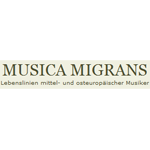- /publications/musica_migrans_mapping_the_movement_of_migrant_musicians

Musica Migrans - Mapping the Movement of Migrant Musicians
Presentation, by Lutz Maicher
External Link: more information
The goal of the historical research project Musica migrans is to capture the migration and travel paths of 19th century German speaking musicians in the countries of Eastern Europe. The main focus is on gathering information about lesser known musicians of this epoch. The goal is to reveal all the hitherto uncharted relationships between people, places and institutions, collect them together in a topic map, present them in a timeline, and thereby gain new insights into the history of these communities and schools of practice.
In the first stage, 25 researchers from Eastern Europe are collecting information on 1,250 musicians using a Topic Maps-based colloborative web application. For each musician information from the following categories is collected: names in different languages, dates and places of birth and death, nationality, places of study and work, and all (known) performances and references. Due to the subject-centricity of the knowledge model, all co-occurrences of two different persons (at the same point) will be gathered at one topic and hidden relationships between the musicians will come to the surface.
The portal is implemented in PHP using the (extended) QuaaxTM engine and uses AJAX technologies to provide a rich user experience. The requirements of the portal required the extension of the engine with features such as a full-text index and and XTM parser/serialiser. A web service interface allows the integration of the portal information into other applications by requesting Topic Maps fragments.
The portal was first released in January 2008 and a production version is planned for March 2008. This presentation describes the background to the project, the reasons why Topic Maps was chosen as the underlying technology, and the architecture of the portal itself, which can serve as a model for similar activities in the field of cultural heritage.
Authors
Lutz Maicher
http://www.wifa.uni-leipzig.de/isrm ...

Lutz is project leader of Musica Migrans, Topic Maps Lab Community.. , and Repertoire of the St. Thomas.. .
Presented at
Projects
This publication is cited in the following publications
As a former information scientist, I am fascinated since 1999 by the capabilities for building Topic Maps-based knowledge systems having the potential to augment human mind. One can model arbitrary knowledge organization systems, deal with semantic heterogeneity, collocate all facts about one subject in one logical place, and with TMQL have semantic retrieval on federated semantic networks. Therefore I expect bright prospects for business concepts building on the exchange of such knowledge snippets via semantic knowledge services.







